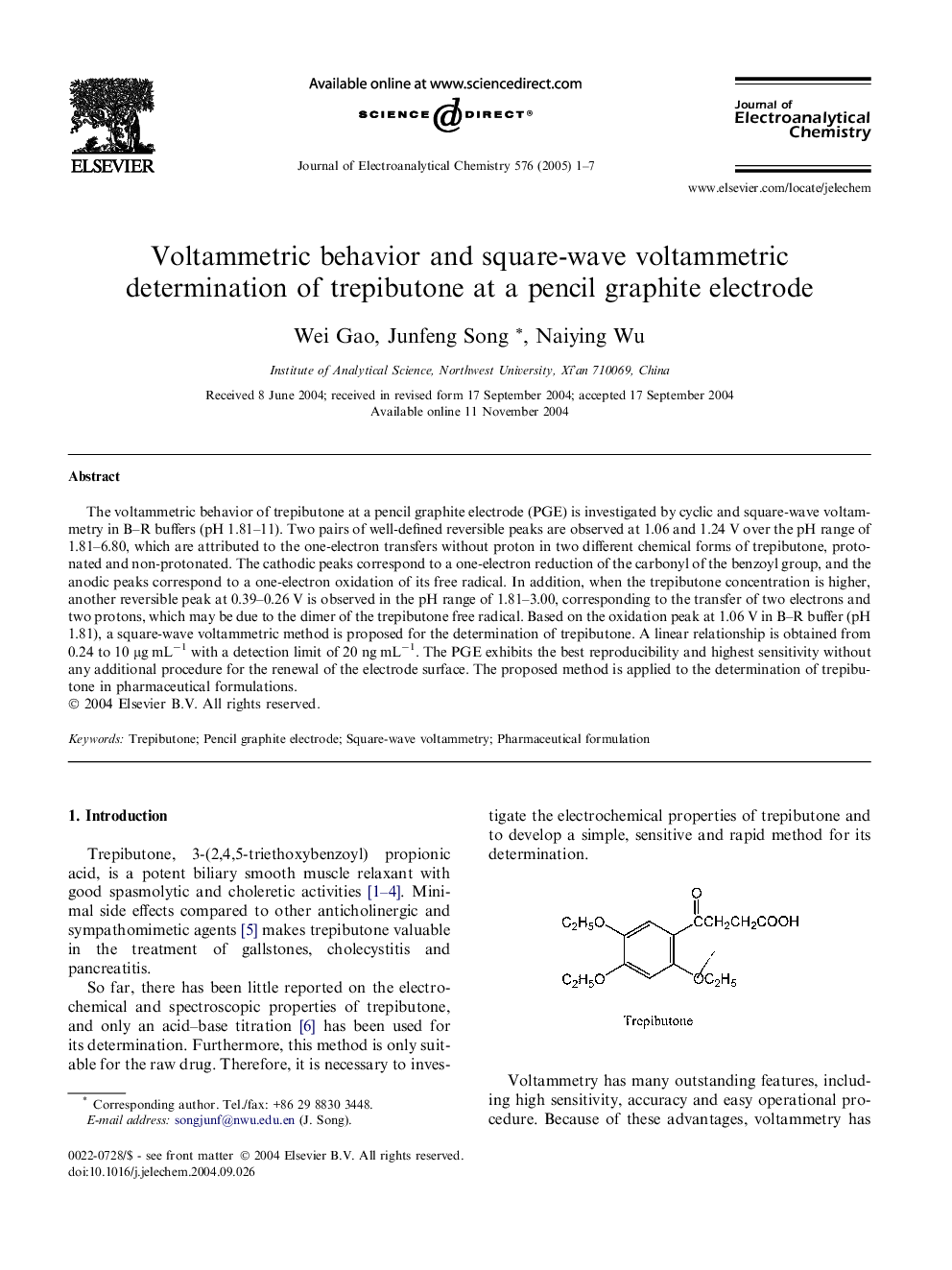| Article ID | Journal | Published Year | Pages | File Type |
|---|---|---|---|---|
| 10275936 | Journal of Electroanalytical Chemistry | 2005 | 7 Pages |
Abstract
The voltammetric behavior of trepibutone at a pencil graphite electrode (PGE) is investigated by cyclic and square-wave voltammetry in B-R buffers (pH 1.81-11). Two pairs of well-defined reversible peaks are observed at 1.06 and 1.24 V over the pH range of 1.81-6.80, which are attributed to the one-electron transfers without proton in two different chemical forms of trepibutone, protonated and non-protonated. The cathodic peaks correspond to a one-electron reduction of the carbonyl of the benzoyl group, and the anodic peaks correspond to a one-electron oxidation of its free radical. In addition, when the trepibutone concentration is higher, another reversible peak at 0.39-0.26 V is observed in the pH range of 1.81-3.00, corresponding to the transfer of two electrons and two protons, which may be due to the dimer of the trepibutone free radical. Based on the oxidation peak at 1.06 V in B-R buffer (pH 1.81), a square-wave voltammetric method is proposed for the determination of trepibutone. A linear relationship is obtained from 0.24 to 10 μg mLâ1 with a detection limit of 20 ng mLâ1. The PGE exhibits the best reproducibility and highest sensitivity without any additional procedure for the renewal of the electrode surface. The proposed method is applied to the determination of trepibutone in pharmaceutical formulations.
Related Topics
Physical Sciences and Engineering
Chemical Engineering
Chemical Engineering (General)
Authors
Wei Gao, Junfeng Song, Naiying Wu,
